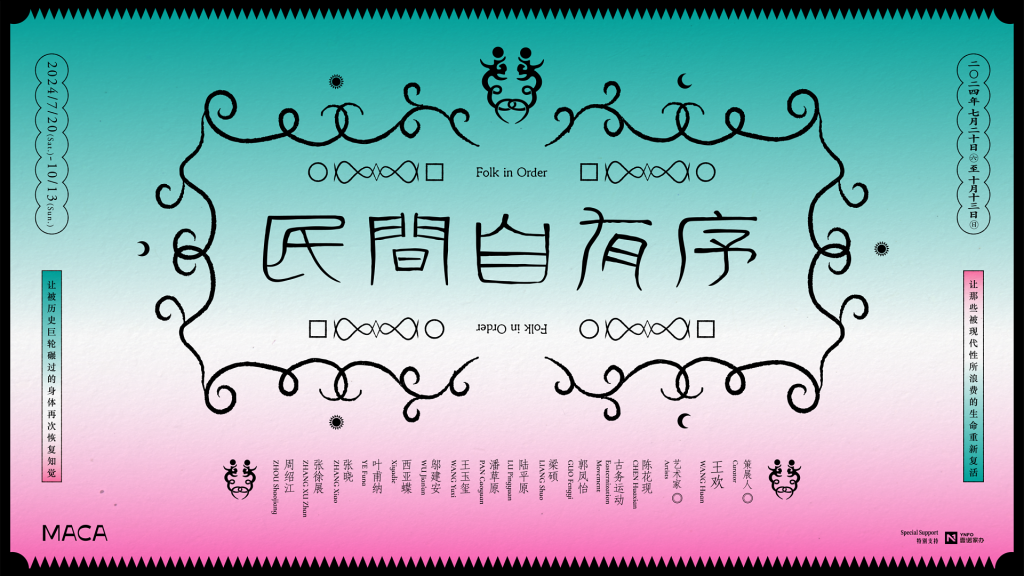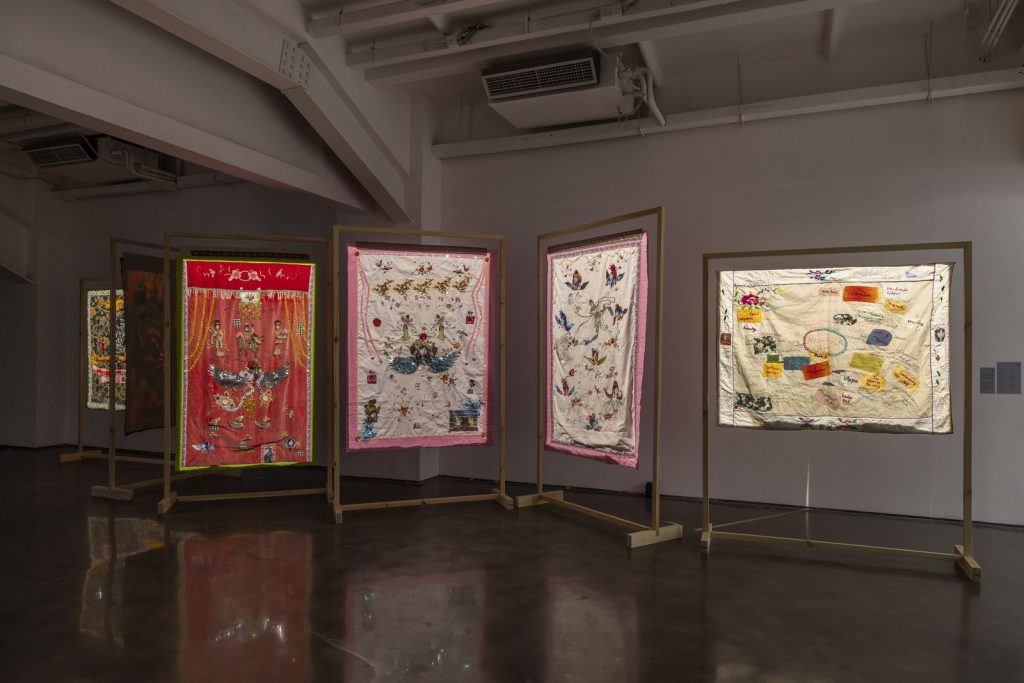https://www.macallineart.org/en/exhibitions/1851/folk-in-order

2024.07.20—10.13
Artists: CHEN Huaxian, Easternization Movement Development Commission (EMDC), GUO Fengyi, LIANG Shuo, LU Pingyuan, PAN Caoyuan, WANG Yuxi, WU Jian’an, Xiyadie, YE Funa, ZHANG Xiao, ZHANG XU Zhan, ZHOU Shaojiang
Macalline Center of Art is pleased to present Folk in Order, a summer group exhibition showcasing the works of 13 artists and collectives. On view from July 20th to October 13th, 2024, the exhibition features 45 works curated by guest curator WANG Huan.
“Every love must part ways. Every mountain shall crumble. Every tree should bow. Every river will wither.”
—Mingdai Baojuan (“The Precious Scrolls from Ming Dynasty”)
We are presumably no strangers to the ubiquitous fabric of folk, as it is scattered everywhere like feathers across our cultural landscape. The unofficial, self-organized, and people-powered concept has evolved countless times throughout bifurcated histories. But now, what do we truly mean when we invoke this term? Is “folk” a heritage of a certain tradition? A raw experience native to spontaneously set rules? Or the wisdom from the streets containing a strikingly strong capability for self-direction? It almost evinces a dynamic check-and-balance relationship that constantly flows between tradition and modern, nationals and governance, and between elites and the “masses.”
The folk world is often depicted as one dismissed by modernist discourses, yet this view seems to underestimate its fluidity and unyielding vigor. Historically, intellectuals have sought to enlighten the masses, hoping to activate untold narratives. However, what if we were to consider the experiences of the folk as a legitimate subject of study and reference? This exhibition intends to advance the proposition “Folk in Order,” as a way to at least acknowledge and address the untapped potential of those unburdened by a pursuit of refinement or discipline. It thus delves into the relationship between the urge to create and the spontaneous order in a folk-powered society. The “self-awareness” of such a society sets itself apart from the sophisticated knowledge constructed by elitists and intellectuals.
Nonetheless, it holds no less promise of becoming a shared aspiration, a compass guiding people beyond existing orders and discourses. This self-awareness likely shuns scrutiny and revision from historical norms, showing the prospect potential of evolving into a history of its right.
In truth, folk never severs itself from the past, for the “past” is profoundly ingrained in the “present.” The raw experiences found among the folk serve to revitalize lives worn down by modernity, acting as a counter-modernization movement that reawakens feelings in bodies trampled by modern progress. In this way, things and memories from ancient times are resurrected through contemporary rituals. Moreover, this experience enriches the supposedly “bleak” fate of those who are deeply involved—their physical and spiritual aimless wanderings, and their transformation from technologies of the self to inner revolution. What people truly believe in when they place their faith in a divine moment occurring within the mundane is, perhaps, the ability to find meaning and value in their seemingly insignificant lives, thus restoring the gentleness and comfort inherent to being human.
Within this exhibition, what we have loosely termed as “folk experience” manifests in a myriad of ways. We witness contemporary artists collaborating with traditional practitioners, trans-cultural creators drawing inspiration from ancient cosmologies, cultural researchers immersed in folk fieldwork, as well as folk artists producing “automatic drawing” and the revival of historically forgotten folklore sutra chanting… However, to reduce the experiences formed within folk realms to mere aesthetics would be a disservice. Instead, the issues intertwined in these experiences—individual cognition, concepts of illness, and real-life predicaments—shed light on the generative mechanisms of collective order, self-healing, and spiritual sustenance.
In light of this, the exhibition aims to reveal the hidden facets of these diverse, folk individuals and communities, capturing moments that allow us to engage with universal questions. What exactly was the potential of art before it became formally recognized as “art?” Where does the most fundamental “urge to create” come from in those without formal training? How do folk societies foster self-healing? How does an individual find their place within a group? Ultimately, this complexity may reframe the exhibition as a broader inquiry into the human condition: Can the spontaneous creativity and vitality of the folk be seen as a wellspring for living an autonomous life?

Folk in Order, installation view, Macalline Center of Art, 2024. Photo: Yang Hao